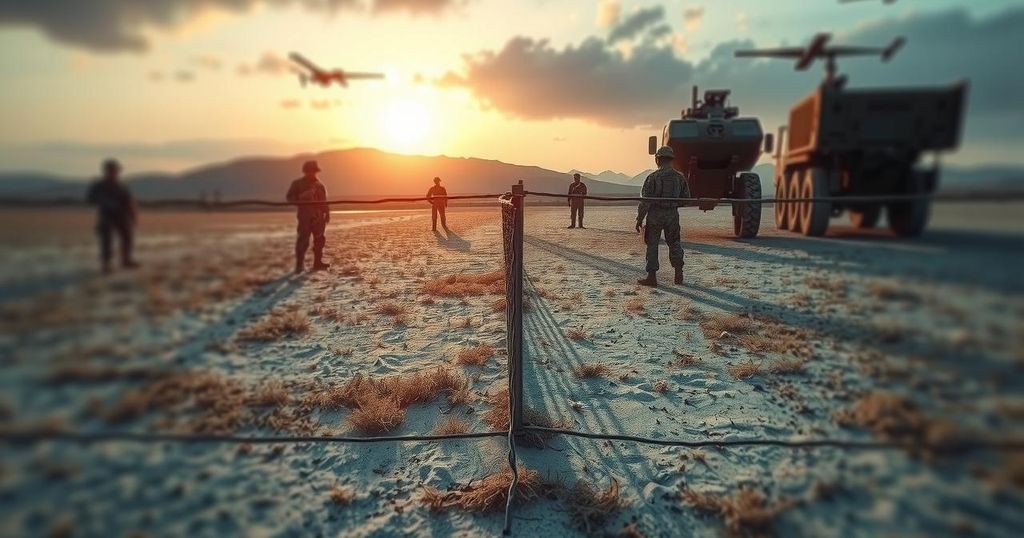M23 Rebels in Goma: The Impact of Rwandan Support and Local Reactions
The M23 rebels, backed by Rwanda, recently released captured Romanian mercenaries as they asserted control over Goma, a crucial area in the DRC. Tensions rise as local reactions remain mixed, with some welcoming the rebels while others express fear. M23 leaders deny Rwandan support despite widespread acknowledgment of such backing, further complicating the conflict landscape in the region.
The recent actions of the Rwandan-backed M23 rebels have garnered significant attention, particularly following the release of Romanian mercenaries captured while fighting for the Congolese army. As these mercenaries crossed the border, Willy Ngoma, the M23 spokesperson, mockingly chastised them, illustrating the tense atmosphere surrounding the conflict. The strategic city of Goma, now under M23 control, has become a focal point for ongoing battles as rebel forces challenge the Congolese government.
On the ground, discarded military fatigues and equipment from the Congolese army signify the chaotic retreat and transformation in the area. Local sentiments appear mixed, with some civilians expressing fear and uncertainty about their future amidst the shifting power dynamics. Meanwhile, others greet the rebels with applause, suggesting a complex reaction from the community facing a new governing authority.
As M23 consolidates its hold, they are not only asserting dominance over the region but also humiliating their former adversaries, including the Romanian mercenaries. The United Nations peacekeeping group, MONUSCO, facilitated the evacuation of these mercenaries, but the humiliating passage witnessed by local civilians highlights the rebels’ disdain for their enemies.
During an exchange, when confronted about Rwandan support, Ngoma insisted, “We are a Congolese army, we are Congolese!” This defiance does little to obscure the well-documented support that Rwanda provides to M23, which has attracted widespread condemnation from international leaders and organizations.
The sight of a wounded Romanian mercenary returning home, flanked by UN personnel and amidst Congolese families fleeing violence, encapsulates the surreal and tragic state of affairs in the region. The war in the DRC continues to unfold dramatically, with enduring implications for local populations and geopolitical relations.
The Democratic Republic of the Congo has been plagued by conflict, particularly in the eastern regions where various armed groups, including the M23, operate. The M23 insurgency is widely alleged to be supported by Rwanda, impacting local governance and exacerbating humanitarian crises. The control of Goma and its surrounding areas is strategically significant due to the rich mineral resources that fuel both local and regional economies. Understanding the dynamics between the rebels, the Congolese government, and foreign influences such as Rwanda is essential to grasp the ongoing conflict.
The circumstances surrounding the M23 rebels and their recent behaviors illuminate the fragile and volatile situation in the Democratic Republic of the Congo, particularly in Goma. The mockery of captured soldiers, along with the palpable fear among civilians, signifies deepening tensions as the rebels assert their dominance. The denial of Rwandan support by M23 leadership is juxtaposed against extensive evidence to the contrary, highlighting the complexities of regional politics and humanitarian implications.
Original Source: news.sky.com




Post Comment